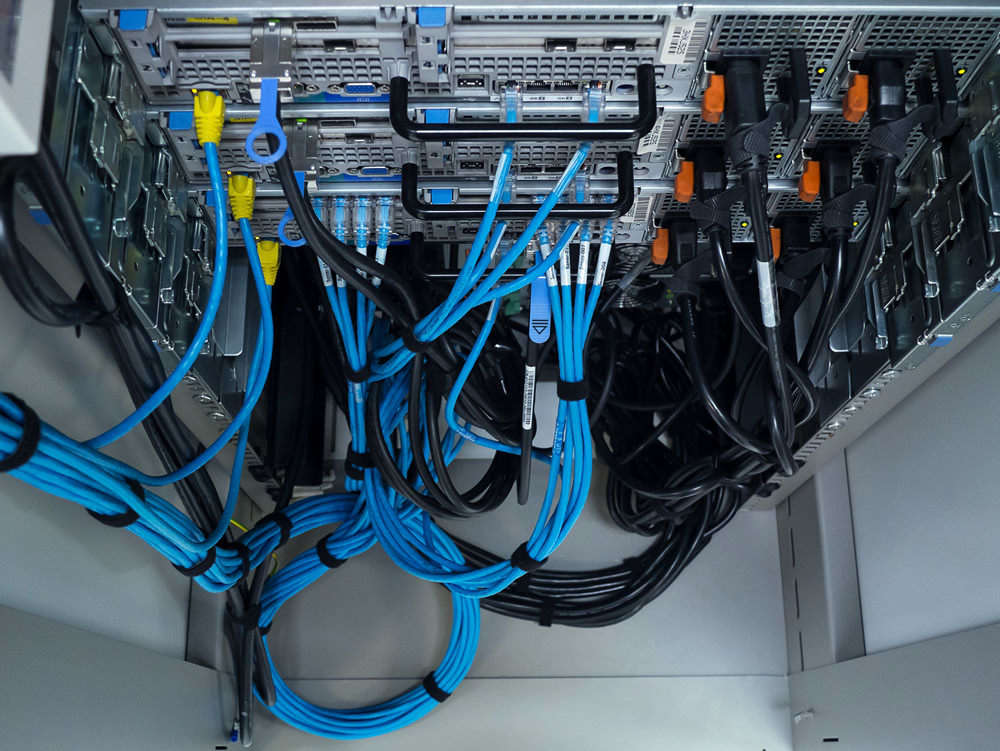
Are concerns about cloud computing holding your business back? It’s not uncommon to feel reluctant to move to the cloud, especially as you hear the same myths over and over again. “The cloud is too expensive.” “It isn’t safe.” “I’m going to lose control of my data.” In this guide, we’re going to look at the 9 most popular myths about the cloud and show you why you can’t afford to believe them.
One of the most common objections we hear to cloud computing is this:
“We already have our server in the office. Why do we need to move to the cloud if everything works fine?”
This is a common argument against cloud computing. Although it might seem like a practical objection (“If it ain’t broke, why fix it?”), what it’s really rooted in is fear — fear based on myths about things like security, data ownership, cost, and so on.
Today, we’re going to show you why you shouldn’t be concerned with moving to the cloud by debunking the 9 most popular cloud computing myths.
9 cloud computing myths holding you back
Fear oftentimes comes from the worry that, by leaving one’s comfort zone, something bad will happen. And, unfortunately, it’s this fear that holds many people back from making important decisions for their business.
Here’s the thing though: The benefits of the cloud are well-documented. It’s just that these long-standing cloud computing myths continue to tarnish its reputation.
So, let’s work on debunking them, shall we?
Myth 1: The cloud is nothing more than a fancy term for the Internet.
They’re actually two different things.
The Internet is the big global network that people use to visit websites, connect with other people digitally, and use cloud computing services.
In order to put anything on the Internet — like a website or app — you need a server and data management system. Users can either buy their own server hardware or they can get it from a cloud provider like Microsoft Azure. This goes not just for the underlying server technology for your app, but also for computing resources for the tools you use in your business.
In that respect, the cloud is essentially on-demand computing. You go online, find the cloud-based software you want to use, and pay a monthly fee for access.
It’s really no different than how you entrust your company’s electricity to your service provider. You flip a lightswitch and your provider makes sure the infrastructure that powers it is always on and reliable.
Microsoft Azure’s cloud computing services not only save you the trouble of managing more hardware for your business, but they keep you from having to worry about things like bandwidth, security, compliance, and backups.
Myth 2: You need to get rid of all your hardware before moving to the cloud.
The cloud isn’t an all or nothing deal.
You can use a mixture of on-premise equipment and cloud computing services. This is called hybrid cloud and it’s gaining in popularity. Why? Well, hybrid cloud solutions allow users to choose the best resources for their businesses and, as a result, maximize their results.
Myth 3: Cloud computing is more expensive than hosting on-premise.

That’s not necessarily true. There are some cloud technologies that may prove more costly than on-premise equipment and vice versa — though, even then, cloud solutions usually prove to be the most cost-effective in the end.
Actually, if you look at it over the long run, you’ll see that Azure cloud computing solutions really are the better value and will put money back into your pocket.
If you’re unsure about how this would work for your own use case, run through the calculations yourself:
CapEx: On-premise hardware and software — equipment that you own and are responsible for maintaining — are known as “capital expenditures”.
When looking at the price vs. the financial return of CapEx, factor in the following:
- The initial cost of the technology.
- The cost to maintain it over the lifetime of ownership. This may be the time your IT specialists spend servicing it or the money you pay the provider to do it.
- CapEx depreciates in value, so if you decide to sell it down the line, understand that there’s no way to recuperate all of your costs.
- As far as taxes go, businesses usually have to amortize (spread out) their capital expenditures over a number of years rather than write them off in the year of purchase.
OpEx: “Operating expenditures” are ones that help you run your business and that you pay for at regular intervals (usually monthly or annually). This includes cloud computing services.
When looking at the price vs. the financial return of OpEx, factor in the following:
- The monthly or annual fee to use it.
- The cost to hire a cloud service provider to manage and maintain it for you (in some cases).
- There’s no depreciation in the value of OpEx costs, though your providers may raise prices the longer you have them.
- As far as taxes go, you can write off all of your OpEx costs in the year that you use them.
Don’t forget to factor in the quality of providers you buy from — for both CapEx and OpEx purchases. If you cut corners, you could see your ROI diminish for either of these.
Bottom line:
When you buy a new piece of hardware or software, it’s not like you can predict how quickly it will degrade or how much maintenance it’ll need to keep running. Not to mention the fact that older systems can impair your team’s ability to work efficiently.
The cloud, on the other hand, is much more predictable. What’s more, your systems will always run on the latest and greatest of technologies.
As Greg Deckler of Microsoft pointed out:
“While it varies wildly depending upon the specifics of the system being deployed, for midmarket/enterprise businesses, cloud-based solutions; despite all conceivable advantages being given to on-premises, represent a potential cost savings of 30%.”
The key to leveraging cutting-edge cloud technology while maximizing your profit is to work with a CSP who can craft the most effective solution from the services available.
Myth 4: Cloud computing is only for tech enterprises.
Cloud computing might seem like the kind of cutting-edge technology that tech startups and enterprises use. But the cloud is for everyone.
There’s no greater proof of that than Microsoft Azure’s product offerings:
Cloud computing technologies come in all shapes and sizes here, including products like:
- File storage
- Video streaming
- App development
- Chatbot creation
- AI-powered search functionality
If you need an Azure offering, don’t let the size or type of your company stand in the way of reaching out. We have clients from many industries — finance, pharma, healthcare, manufacturing, and more. Everyone can benefit from the cloud.
Myth 5: The cloud isn’t secure.
The truth is, there are some security risks associated with moving to the cloud, though you can greatly minimize those risks by working with a cloud provider that has extensive experience and expertise in the field.
For example, there are far fewer security risks when you move your business into the Microsoft Azure cloud.
Why is that?
Obviously, there’s Microsoft’s vast experience in the computing space. But if you take a closer look at the Azure stack and the infrastructure behind it, you’ll also see what a strong focus the company has on security, from its big security budget to the top talent hired to manage it all. If you want to minimize the risks of moving to the cloud, there’s no better choice.
Just keep in mind that security is never a simple thing, even if you have a provider like Microsoft managing it for you. That’s why it’s always a good idea to hire a CSP who can help you navigate the complexities of the cloud (and its security).
Myth 6: You’ll lose control of your data.
Again, this is another one of those things where it really depends on which cloud provider you use. With Microsoft Azure as your cloud provider, for instance, you can rest assured that data privacy is a priority.
Your data remains yours to own and manage, even when you put it in the cloud.
That said, while Microsoft isn’t out there giving your data away to the public, it could still be compromised. If you don’t do your due diligence to secure your cloud assets, hackers could easily find their way to it.
With strong authentication and encryption procedures, though, you can keep that from happening (and Azure has tools like the Key Vault to help you do that).
Myth 7: There’s no maintenance to worry about in the cloud.

It’s true that you won’t have any tangible hardware or software to maintain. However, you’ll still have some work to do. First, starting with setting up your cloud solutions and, then, keeping them in tip-top shape.
You’ll get some help in this matter from your cloud provider. Because they own the servers and systems your technology runs on, they’re responsible for maintaining that piece. As for the applications you use or build in the cloud, though, someone else is going to have to take care of them.
This is why a cloud service provider (CSP) is so vital for any business that uses Azure cloud technologies.
Not only can your CSP (like Convergine) build custom applications using Azure solutions, but it will also provide end-to-end maintenance of your products. So, if a bug is detected, a security breach occurs, or something else affects the performance of your app, your CSP is on it.
With Convergine, in particular, you’ll have a service level agreement (SLA) that ensures your Azure products are monitored and supported 24/7.
Myth 8: Once you’re in the cloud, you’re good to go.
There is part of this myth that has some truth to it.
Migrating to the cloud is the key to innovation. And once you’ve done it, computing no longer becomes a concern as your cloud provider and CSP handles it for you. In addition, the cloud exposes your business to a whole new world of efficiency and growth, from AI technologies to chatbots, and everything in between — something you can’t get from on-premise solutions.
So, in that sense, you really are good to go.
That said, cloud computing is like any other technology. You’ll eventually find that your cloud solutions either can’t keep up with your business or have fallen behind in terms of market competitiveness. It’s just the nature of technology.
Rather than allow your cloud solutions to stagnate and hurt your business’s progress, you need to pivot when a change is needed. Although the pivot itself is much easier to do in the cloud than on-premise, it can be difficult to know when to do it.
This is another reason why it’s so useful to have a CSP partner. They’ll audit your cloud systems on an annual basis and make sure you’re still using the optimal solution for your needs. If it’s not, they’ll be there to help you scale up, down, or to a different solution entirely.
Myth 9: Migrating to the cloud is easy.
While it’s certainly easy to visit the website of Microsoft Azure (or other cloud providers) and click “Buy Now” once you’ve found what you need, entering the cloud is not as simple a task.
When migrating from an on-premise solution to the cloud (or from one cloud provider to another), it takes more than just switching off one thing and activating another.
While your workflows will seamlessly transfer from one system to another, there may be some side effects after the shift. For instance, who you hire, how you manage your technologies, as well as reworking your company documentation may all be impacted.
So, while there are tons of benefits to reap by moving to the cloud, you need to look over your organization and how it will be affected before you jump in. Once you’ve calculated the full impact, start getting everything ready for the move.
Wrap-Up
What’s nice about these common cloud computing myths is that they bring to light some critical truths that business owners might not otherwise have become aware of. Rather than instill more fear in the cloud, debunking these myths allows people to see how powerful these technologies really can be — when used properly.
And, the fact of the matter is, the longer you wait to move to the cloud, the more you’re going to impede your business’s ability to make progress or innovate.
If you’ve gotten to this point in the article and you’re wondering what the next steps are, drop us a line. Whether you need help finding a new cloud solution or upgrading to Azure from your current one, we can help.










